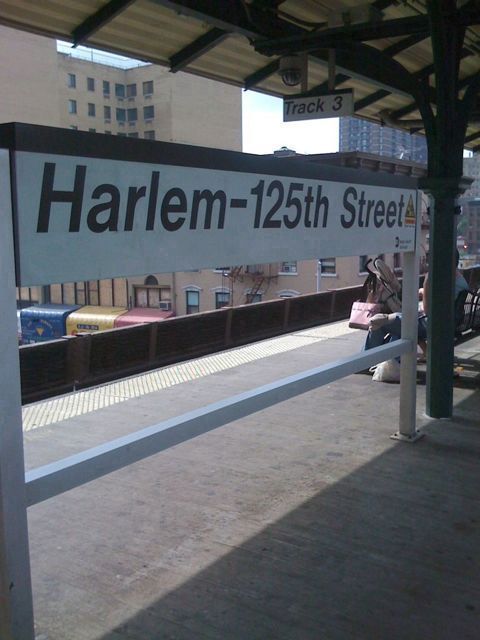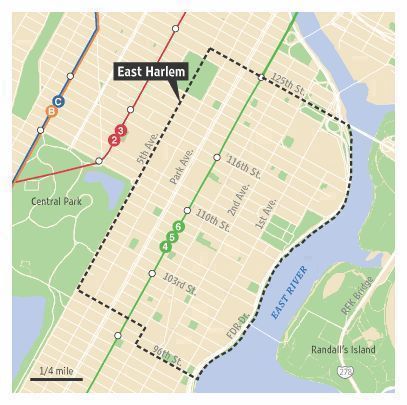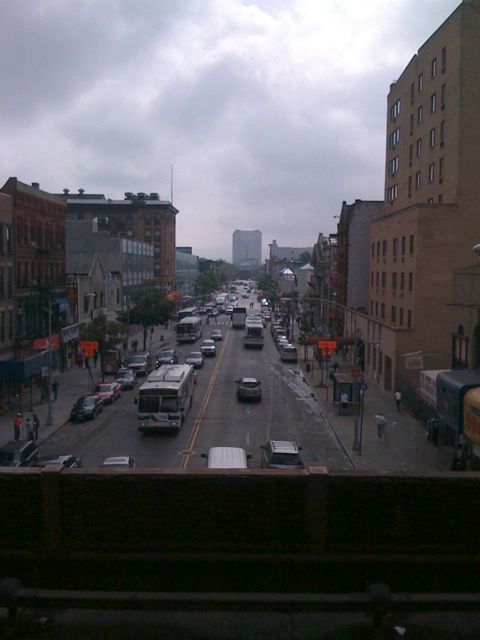By HarlemGal for HarlemCondoLife
I can’t help but notice how the Rupert Murdoch business publication called The Wall Street Journal keeps writing and profiling Harlem in their real estate section in a very positive light! It just happened again over the weekend with a highly complimentary article titled Costco, Condos Accent Today’s East Harlem, which is also known as Spanish Harlem.
To my knowledge, this is about the third or fourth positive article in this conservative publication about Harlem this summer. Based on those brief statistics, I have to ask: is The Wall Street Journal in love with Harlem, a neighborhood in the borough of Manhattan, long known as the black capital of the world? Let’s recap to answer that question.
About a month ago, Austin2Harlem told us about the raving WSJ article on Frederick Douglass Boulevard. Then we see ongoing coverage about the Emmitt Smith hotel project. Up next was a somewhat sympathetic article about a condo titled Getting Deals Done. This talked about the unique structure called Gateway Condominiums. And now in July, we see a glowing article about East Harlem by the Journal saying it “has come alive.” These are the printed words you will now see in what I believe to be one of the most conservative business papers on the planet. I am not knocking their coverage of Harlem. I am just saying I am shocked that this is now happening and that I somewhat agree with some of the things mentioned by the Journal about Harlem, which leads me to answer my own question with an enthusiastic YES!, I do think The Wall Street Journal is madly in love with Harlem. Can you blame them?
9 thoughts on “Is The Wall Street Journal in love with Harlem?”
Comments are closed.



@Anon 10:29. Thank you for providing the original WSJ clip!
A writer at the WSJ did buy a brownstone in Harlem…CONFIRMED!
http://online.wsj.com/article/NA_WSJ_PUB:SB10001424052748703871904575216123250457174.html
12:16 — more likely the the real estate interests would spend some money on public relations to bring stories to reporters’ attention.
No way would there be a more direct financial relationship, except perhaps in terms of advertising, which is strictly firewalled from the reporting side. WSJ and other papers have too much invested in their own credibility to cross over that very bright line.
or real estate firms with an invested interest in harlem are paying the WSJ to print stories about how hot harlem is…
Thanks for all the comments.
@whiteguyon125 did Rupert Murdoch buy in Harlem? If so, where?
@Pete I guess it is a deep like. And who knows, maybe this person who bought a shell in Harlem is telling the staff, guess what your covering Harlem a bit more.
Let’s see what they print in August!
I saw Rupert coming out of 5th on the Park with his wife on Friday. I think he is trying to flip what he bought so he can make some $
Anon — good call, I do remember something along those lines. That would certainly help to explain some of the awareness that might otherwise have been missing…
Didn’t one of the Editors of the WSJ recently buy a Brownstone shell in Harlem? If I recall correctly they were writing a chronicle of their experience gutting and redesigning their building.
It would make a lot of sense why you are seeing lots of Harlem articles now
HarlemGal, I’m not a big fan of the WSJ per se, though I do read it every day. I think the pattern you are pointing out is an outgrowth of the paper’s new “Greater New York” section, which has led to a lot more local reporting than they ever had in the past.
So Murdoch’s influence exists in the sense that he is keen on having the Journal compete with the NY Times in the “local” NYC market, and the new section is a vehicle for that. I will say that the conservative bent of both Murdoch and the existing WSJ editorial board have not, as far as I can tell, appeared outside the editorial pages of the paper (which I try to avoid).
Finally, this leads me to a comparison with the NY Times. I’m not sure it’s an editorial slant per se, so much as it is a function of the niches carved out by beat reporters and a measure of institutional blindness — but I have definitely noticed that NYT reports on Harlem, when they occur, tend to fall into one of two categories:
1. A human-interest “culture” article, in which the reporter steps into the role of anthropologist to relay fascinating tidbits or tales of human hardship, typically with great affection.
2. A report that presents evidence of change, such as “gentrification,” in an extremely tense and politicized frame. Such an article will typically rely heavily on quotes from entrenched activist groups.
Again, I wouldn’t call this “liberal” or anything of the sort — it’s more a matter of myopia.
I think it is interesting, though perhaps it shouldn’t be too surprising, that the WSJ, with its new section and new local beat reporters, is better able to both perceive and report on the rapidly changing landscape in Harlem than the relatively calcified NYT.
I don’t know if I would call that a “love affair” — but it’s a hopeful trend for both Harlem and the WSJ.